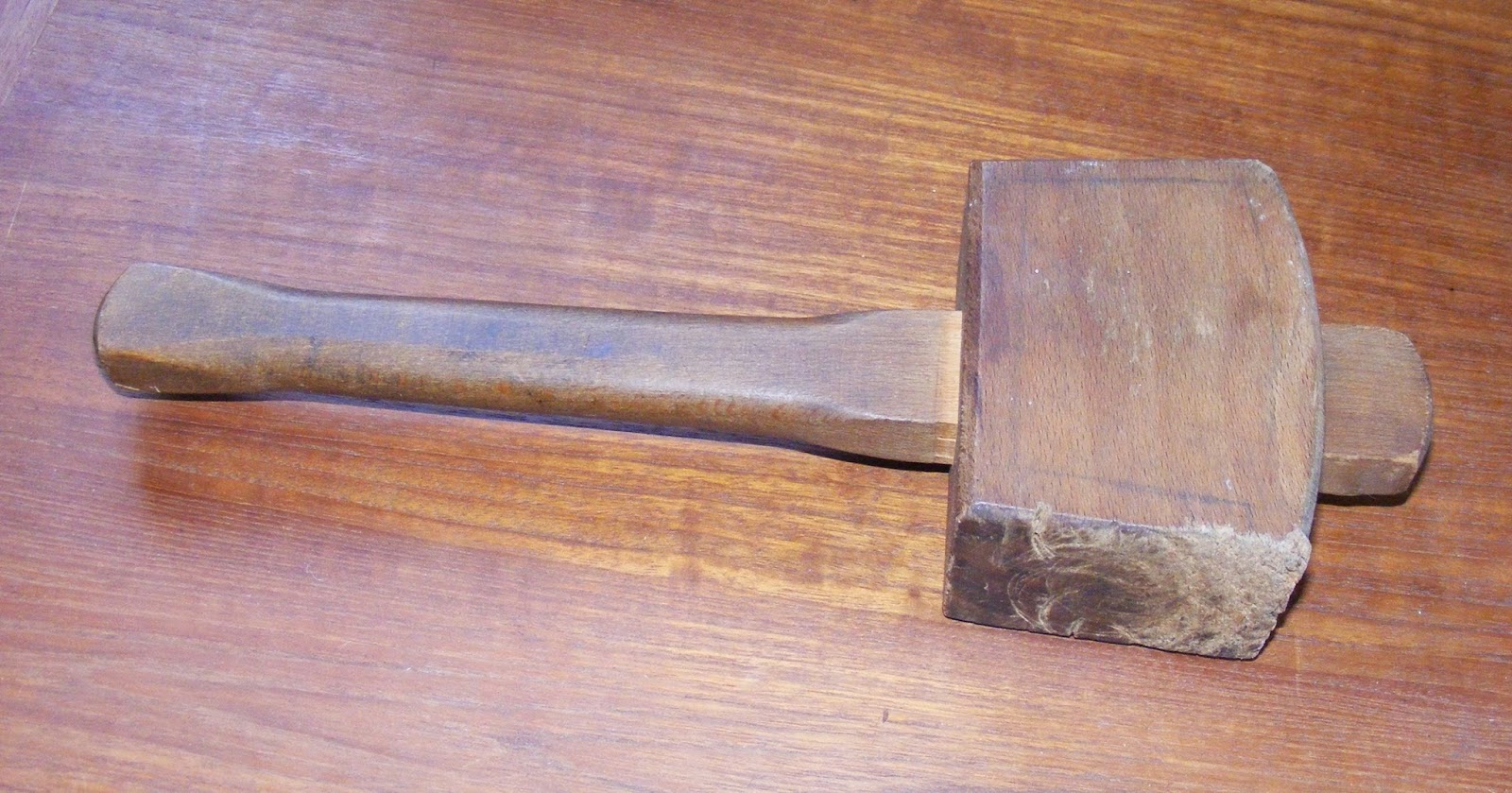For a first project I thought I’d start with the essentials:
a shooting board, a useful appliance for planing the edges of lengths of wood square. I’m hoping this will also prove a good way of practicing some
basic woodworking skills making accurate and true pieces of wood. I'd be working from plans taken from Carpentry for Beginners by Charles H. Hayward.
To start of with, and apologies if these seems dull, I'll be making one bit of wood, the base piece of the shooting board, and doing my best to make sure it was accurate on all sides.
After a bit of a root around last time I was at the timber
yard I managed to pick up some quarter-sawn Chestnut roughly 5’ long, 7” wide
and 1 ¼” thick. The quarter-sawn grain should prevent any cupping off the wood
throwing the shooting-board out of square (I’ll admit this will be my second
shooting board – the previous one was made out of some scraps of Oak and Pine
with little understanding of wood movement and following no tried and tested
plans, it was near useless after a while).
 |
| The Raw Material |
 |
| A poor picture in which you can just make out the quarter-sawn grain |
To start off I cut the board into two pieces just to make it
more manageable. You can see that the surface of the wood is fairly rough, so
my first challenge was to clean up and true one side which would become the
face side.
To do this I started traversing the wood at an angle (planing
against a small batten nailed to my workbench top) until I was getting
consistent shaving across the wood, which should be a sign that any belly or
cupping was removed. I decided to use my fore plane for this as the sole is nice and flat for accurate work while the iron has a bit of a camber for hogging of material. I probably could have got away with using my wooden jack plane, or my jack and trying plane but using the fore plane saved me switching tools continuously (and I think the sole of my wooden trying plane has a slight belly which I've not had the confidence to tackle yet!)
Having trued the board up across the grain I then changed
and planed along the grain to ensure the board had no bow lengthwise.
 |
| Planing along the grain |
Having planed the surface down I checked for any twist in
the board using pair of winding strips, then having confirmed it was true I
planed down one edge of the board to make sure it was square to the face –
giving me a trued face and edge to make all my later marking from. These were marked with the traditional ‘face
mark’ of a loop connected to the ‘face edge mark’ of a V, pointing towards the trued
face.
With a true face I then marked round the 4 edges with a
marking gauge to mark the desired thickness and then, in a similar process to
before, planed the other side down to these marks so the board was of a
constant thickness.
 |
| Trued up |
Having trued both faces I just had the 2 end edges and one
side that still required attention. The sides were already parallel. The face edge
was already squared up, so it was the work of an instant to square up the other
side and one end (which I had taken pains to cross cut square when dividing the
starting board) – testing repeatedly with a try square. During this however I noticed some cracks in the wood, what I believe is called 'heart shake', I'm not sure if it's best to try and plane these cracks off (leaving me with a narrower shooting board), or if I can just fill them with epoxy or similar.
 |
| Heart shake? |
The other end however
had a knot in it and was far from being square. I'd left a bit of surplus length to allow this to be re-sawn. Because I was making a shooting board I couldn’t rely
on being able to plane the end square if my sawing was off so I had to get this as close as possible straight from the saw.
To do this I cut a channel square across all four sides of the board for my saw to track in. This was done with a square and a marking knife. First I squared across the board as usual, and went back across the markings to deepen them with my knife, I then came back along the lines with my marking knife at an angle to dig out a V shaped trench. The V should lean into the waste side of the cut with its back, so that you don’t leave a beveled edge on the keeper.
 |
All in all, after a couple of hours work I had turned a bit of wood
into a square and true bit of wood. It doesn’t look like much but I feel taking
the time to do this properly will teach me valuable lessons in accuracy. The shooting board needs two more bits which will hopefully come from the other half of this board of Chestnut. With varying thicknesses I'll be needing to try my hand at re-sawing a thick board down to two thinner ones next - another opportunity to learn something I think!












